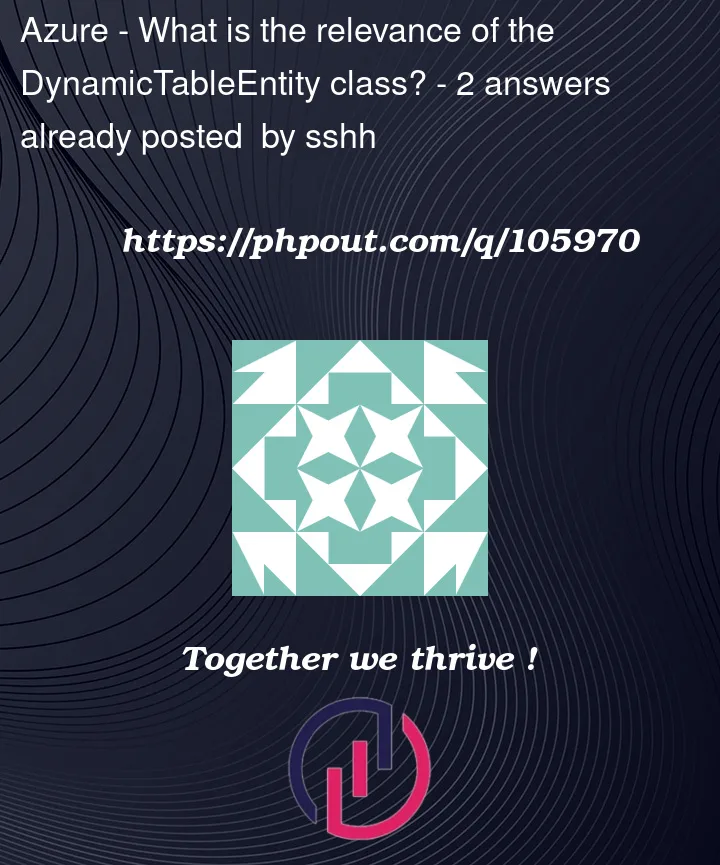-
I am migrating from
Microsoft.WindowsAzure.Storage.Tablein the (now obsolete)WindowsAzure.StorageNuGet package toAzure.Data.Tablesand I can see that there are places whereDynamicTableEntityis being used in my project. -
But
DynamicTableEntityis not present in theAzure.Data.TablesNuGet package, onlyTableEntityandITableEntity.-
TableEntityis available in:- WindowsAzure.Storage at
Microsoft.WindowsAzure.Storage.Table.TableEntity - Microsoft.Azure.Cosmos.Table at
Microsoft.Azure.Cosmos.Table.TableEntity - Microsoft.Azure.CosmosDB.Table at
Microsoft.Azure.CosmosDB.Table.TableEntity. - Azure.Data.Tables at
Azure.Data.Tables.TableEntity.
- WindowsAzure.Storage at
-
DynamicTableEntityis available in:- WindowsAzure.Storage at
Microsoft.WindowsAzure.Storage.Table.DynamicTableEntity - Microsoft.Azure.Cosmos.Table at
Microsoft.Azure.Cosmos.Table.DynamicTableEntity - Microsoft.Azure.CosmosDB.Table at
Microsoft.Azure.CosmosDB.Table.DynamicTableEntity. - But not in the Azure.Data.Tables NuGet package.
- WindowsAzure.Storage at
-
-
Is there a difference between
TableEntityandDynamicTableEntity? -
I read articles but still don’t understand the relevance:
Azure.Data.Tablesv12 doesn’t have a classDynamicTableEntityunderAzure.Data.Tables. -
Is there any equivalent class that I can use for the same for the migration?




2
Answers
I am facing the same issue with my code. While reading the Microsoft docs, I found this description of the
TableEntitytype. TheAzure.Data.TablesTableEntityclass is:This appears to be the replacement for DynamicTableEntity. Furthermore, it implements:
Also, it has type conversion helper methods that can be used in place of the former
EntityPropertyhelper methods.https://learn.microsoft.com/en-us/dotnet/api/azure.data.tables.tableentity?view=azure-dotnet
For anyone hitting this later. Here is an example of property updates in the
Azure.Data.Table world.
Note the ETag.All, this will simply blanket update the specified field regardless. Explore other options if you need to check the version of the record you are updating etc. Also note, V used for generic value in this instance as it is a part of a generic class that uses T already.